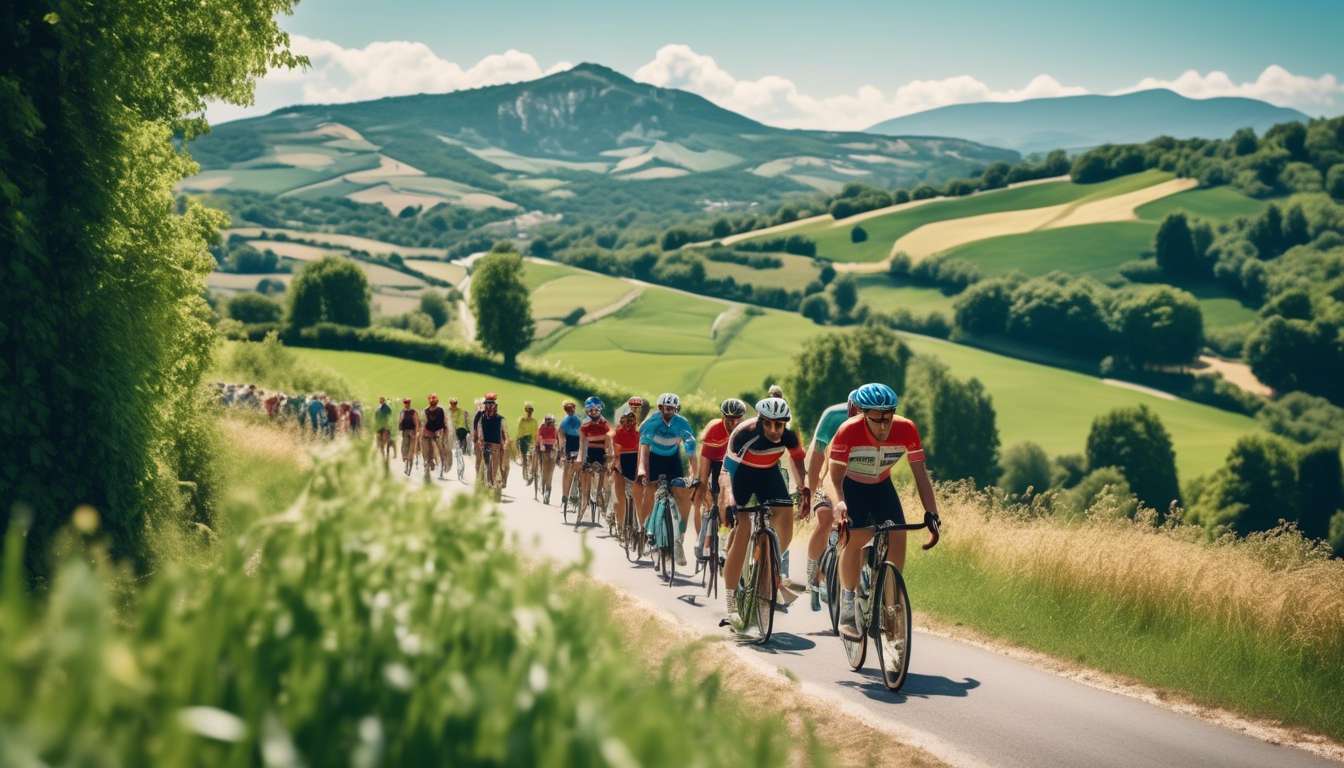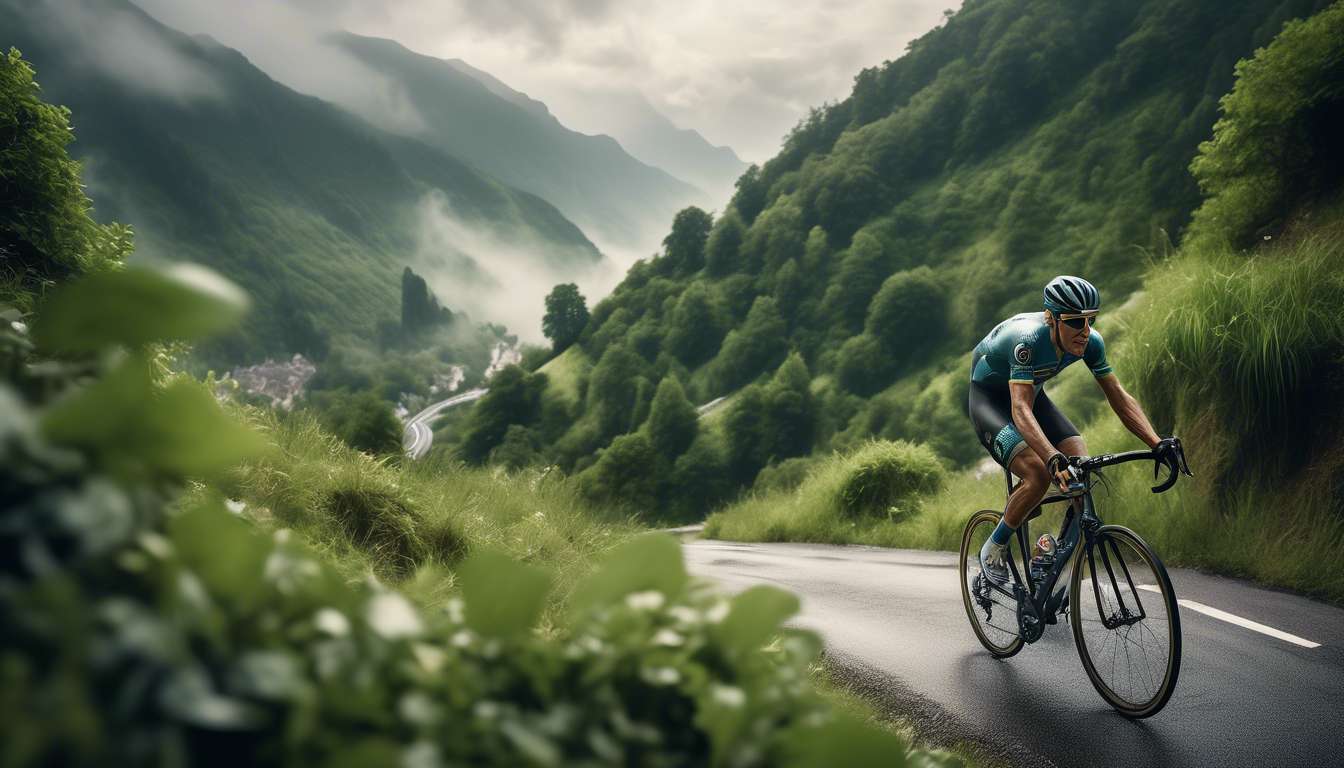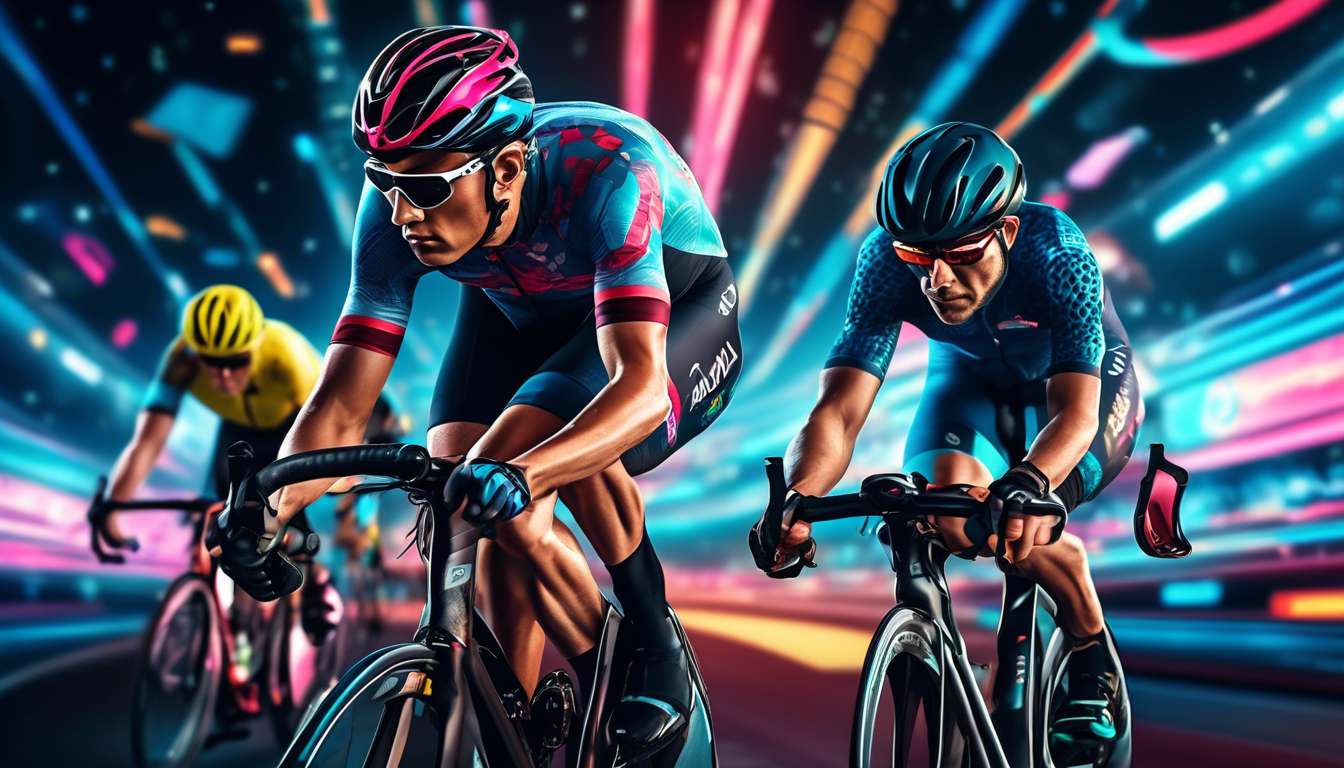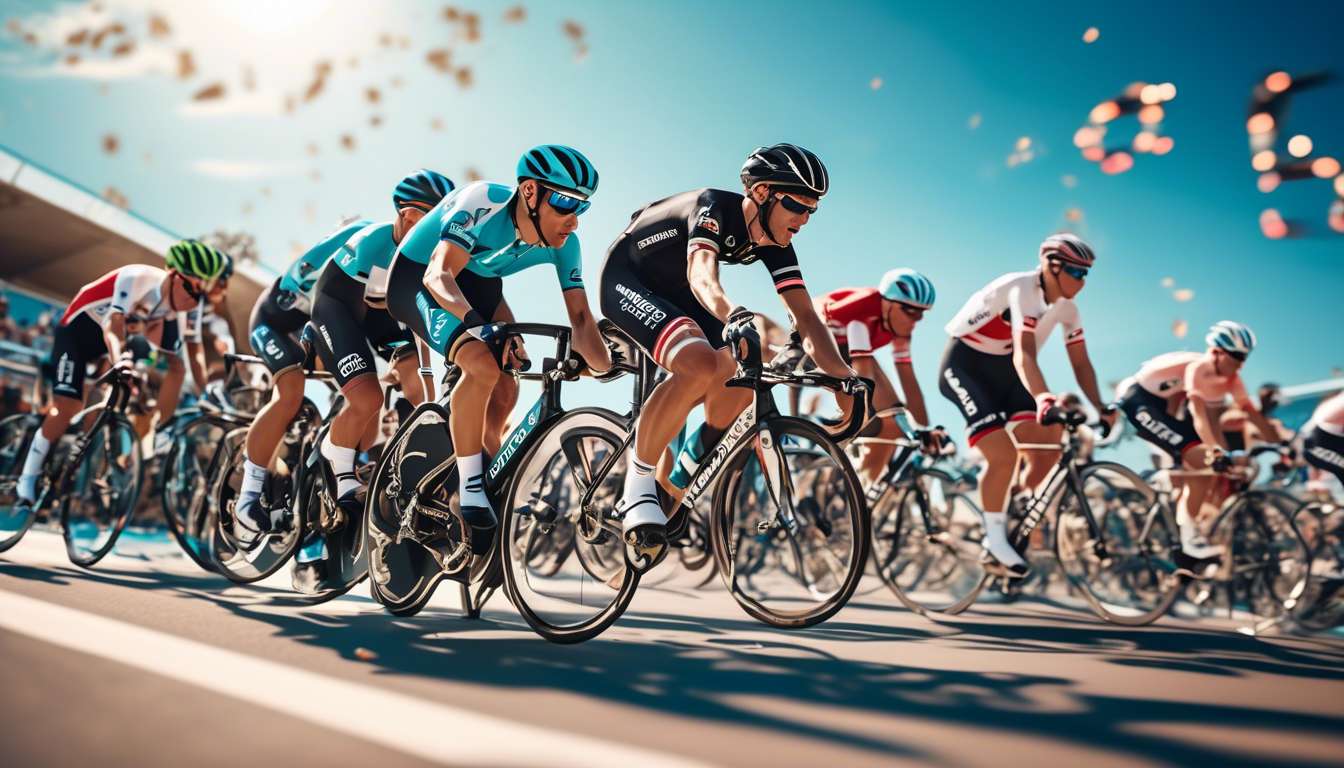The Tour de France: A Cycling Spectacle
As cycling enthusiasts, we find ourselves drawn to the grandeur and challenge of the Tour de France. It’s not just a race; it’s a spectacle that embodies endurance, strategy, and the spirit of competition.
Navigating the Tour de France
For newcomers, diving into the world of the Tour can be overwhelming due to its rich history, complex stages, and the sheer scale of the event. That’s why we’ve crafted this essential guide to help you navigate the ins and outs of this legendary race.
Key Areas of Focus
-
Key Terms: Understanding cycling lingo is crucial. Terms like "peloton," "domestique," and "maillot jaune" (yellow jersey) are foundational to grasping race dynamics.
-
Stages Unfold: The Tour comprises various stages, including flat, mountainous, and time trials. Each stage demands different strategies and showcases unique elements of the sport.
-
Riders and Teams: Identifying the riders and teams to watch enhances the viewing experience. Look for past winners, rising stars, and strong team dynamics that influence race outcomes.
Enhancing Your Tour Experience
Whether you’re tuning in for the first time or looking to deepen your appreciation of the sport, our guide is here to ensure you experience the Tour de France with insight and enthusiasm. We aim to make this journey as thrilling for you as it is for seasoned fans.
Together, we’ll explore the Tour, making your viewing experience both enlightening and exciting. Enjoy the ride!
A Brief History of the Tour
The Tour de France, established in 1903, has grown into one of the world’s most prestigious cycling events. Initially created to boost newspaper sales, this grand race quickly captured the public’s imagination. Through the years, it has become more than just a competition; it is a cultural phenomenon that unites people globally.
Stages and Challenges:
The event features 21 grueling stages, each challenging the cyclists with unique terrains and conditions. These stages aren’t just tests of endurance; they offer opportunities to rally behind favorite riders and feel connected to their journeys.
Iconic Jerseys:
- The yellow jersey symbolizes overall leadership.
- The green jersey represents sprint points.
- The polka dot jersey is awarded for mountain climbing prowess.
- The white jersey is for the best young rider.
These jerseys stand for triumph and resilience, with stories of passion and perseverance written in every pedal stroke.
Fan Engagement:
As fans, we find ourselves inspired, cheering for the competitors as if we’re part of their teams. In this shared experience, we discover a sense of belonging, feeling connected to the excitement and challenges faced by the cyclists.
Together, we marvel at the event’s history and the shared excitement it brings to cycling enthusiasts around the globe.
Mastering Key Tour Terms
Let’s unravel some essential Tour de France terms to enhance our understanding and appreciation of this legendary cycling race. Together, we’ll dive into the language that unites fans and riders alike.
Peloton
The "peloton" refers to the main group of cyclists riding together. It’s not just a cluster of riders; it’s a symbol of teamwork and strategy.
Breakaway
The "breakaway" is when some cyclists surge ahead of the peloton, often in pursuit of stage glory.
Jerseys
Understanding the significance of jerseys is crucial:
-
The "maillot jaune" or yellow jersey is worn by the overall leader in the race, serving as a beacon of excellence.
-
The "maillot vert," or green jersey, goes to the points classification leader, rewarding sprinting prowess.
-
The "maillot à pois" or polka dot jersey is for the king of the mountains, celebrating climbing strength.
By mastering these terms, we’re not just spectators; we’re part of the Tour de France community.
Demystifying Tour de France Stages
Let’s explore the diverse stages of the Tour de France, each offering unique challenges and thrilling moments.
Flat Stages:
- Often lead to exhilarating sprint finishes.
- Sprinters shine, showcasing their speed and strategy.
Mountainous Stages:
- Climbers battle steep ascents and descents.
- Often decisive in determining the overall race leader.
Time Trials:
- Individual or team-based.
- Test each rider’s endurance against the clock.
- Add a strategic twist as riders aim for precision and speed.
The different stages of the Tour influence the distribution of coveted jerseys:
- Yellow Jersey: Signifies the overall leader, a symbol of excellence.
- Green Jersey: Rewards the best sprinter.
- Polka Dot Jersey: Crowns the king of the mountains.
As we cheer for our favorite riders, understanding these stages and jerseys helps us feel connected to the pulse of the Tour de France. Together, we belong to this grand cycling tradition.
Spotlight on Riders and Teams
Let’s dive into the captivating world of the athletes and squads that make the Tour de France an unforgettable spectacle. As we explore the peloton, we witness a blend of talent and strategy. Each team, consisting of eight riders, works together across grueling stages to achieve victory and gain those iconic jerseys.
Iconic Jerseys and Their Significance:
- Yellow Jersey (Maillot Jaune): Worn by the overall leader, symbolizing endurance and excellence.
- Green Jersey: Rewards the sprinting specialists who excel in speed.
- Polka Dot Jersey: For the king of the mountains, celebrating climbing prowess.
- White Jersey: Represents the best young rider under 25.
We can’t help but feel a sense of unity as we cheer for our favorite cyclists and teams. The camaraderie among fans and riders makes us part of something bigger.
Together, we celebrate every pedal stroke and each triumph, weaving our stories into the rich tapestry of the Tour de France.
Understanding Race Tactics
Grasping the intricate race tactics is essential to appreciating how cyclists maneuver through each stage, strategizing to outwit rivals and seize victory.
In the Tour de France, every stage presents unique challenges and opportunities. As we watch, we notice that teams often work together in the peloton, saving energy for crucial moments. Each cyclist has a role, whether it’s:
- Leading the pack
- Shielding their team leader from wind
- Pacing on climbs
Breakaways are thrilling, offering a chance for lesser-known riders to shine. Yet, timing is everything. We see teams calculating when to chase or conserve energy, aiming to catch breakaways before the finish line.
Sprint stages require explosive power, while mountainous stages demand endurance and strategy.
Understanding these tactics makes us appreciate the pursuit of the coveted jerseys even more. It’s not just about individual strength but about collective strategy and knowing when to push boundaries.
Together, we celebrate these shared triumphs and challenges.
Unveiling Tour de France Jerseys
Among the most iconic symbols of the race, the various colored jerseys represent the ultimate goals and achievements for every competitor. As we delve into the Tour de France, understanding these jerseys helps us feel more connected to the riders and the race’s thrilling stages.
The Coveted Yellow Jersey ("maillot jaune"):
- Worn by the overall leader
- Target for every rider dreaming of glory
- Symbolizes the fastest cumulative time across all stages
The Green Jersey:
- Awarded to the best sprinter
- Rewards consistent high finishes and sprint points
The Polka-Dot Jersey:
- Features striking red spots
- For the "King of the Mountains"
- Awarded to the rider who excels in the race’s challenging climbs
The White Jersey:
- For the best young rider under 26
- Showcases emerging talent
By learning about these jerseys, we share a deeper connection to the riders, their dreams, and the Tour de France’s rich history.
Spectacular Tour Moments
Few events in sports history can match the exhilarating moments that have unfolded during the Tour de France, captivating audiences with daring breakaways, unexpected victories, and dramatic comebacks. Together, we’ve witnessed cyclists push beyond limits, transforming each stage into a battlefield of endurance and strategy.
Underdog Triumphs:
- Remember when a rider in a lesser-known team surged ahead in the mountain stages?
- Seizing the polka dot jersey against all odds.
These underdog triumphs remind us that in the Tour de France, anything is possible.
As we follow the peloton, we become part of a shared experience, cheering from corners of the world. Key Moments Include:
- The yellow jersey changing hands in nail-biting time trials.
- The resilience of those who fight through crashes and fatigue.
Each stage brings new stories that become part of our collective memory.
The Tour isn’t just a race; it’s a journey we embark on together, each jersey color adding its unique flavor to the narrative.
Tips for Enjoying the Tour
To fully immerse ourselves in the excitement of the Tour de France, let’s explore a few essential tips for maximizing our viewing experience.
Understanding the Stages
Each stage of the Tour de France offers a unique challenge:
- Flat sprints
- Grueling mountain climbs
By familiarizing ourselves with the route, we can anticipate thrilling moments and cheer on our favorite riders as they tackle different terrains.
Significance of the Jerseys
The jerseys in the Tour de France hold great significance:
- The yellow jersey represents the overall leader.
- The green jersey is awarded for points in sprints.
- The polka dot jersey goes to the best climber.
- The white jersey celebrates young talent.
Knowing these jerseys helps us identify the leaders and adds depth to our viewing.
Connecting with Fellow Fans
Engaging with other fans enhances our experience in several ways:
- Joining online forums
- Participating in local viewing parties
Sharing insights and excitement with others creates a sense of community, making the Tour de France even more enjoyable.
How is the route for the Tour de France decided each year?
Each year, the route for the Tour de France is meticulously planned by race organizers. They carefully consider several factors to ensure a successful and engaging event.
Key factors in planning the route include:
- Showcasing diverse landscapes
- Challenging the riders
- Honoring cycling history
The route typically covers various terrains across France, including:
- Mountainous stages
- Flat sprints
- Time trials
Ultimately, the goal is to create an exciting, unpredictable, and demanding race that captivates fans worldwide.
What are the logistics involved in transporting teams and equipment between stages?
When it comes to transporting teams and equipment between stages, a well-coordinated effort is essential.
Logistics involve:
- Organizing vehicles
- Coordinating personnel
- Planning schedules
These elements ensure smooth transitions as team buses, trucks, and support staff move efficiently to the next stage location.
It’s a complex operation that requires:
- Meticulous planning
- Effective teamwork
The logistics team plays a crucial role in ensuring that everything runs smoothly during the Tour de France.
How do riders handle nutrition and hydration during the race?
During the race, we riders handle nutrition and hydration meticulously.
We consume various items to fuel our bodies:
- Energy bars
- Gels
- Drinks
Staying hydrated is crucial, so we have water bottles readily available on our bikes.
Proper nutrition and hydration are key to maintaining our performance throughout the grueling stages. It’s a constant balance to ensure we have enough energy to push ourselves to the finish line.
Conclusion
Now that you’ve delved into the fascinating world of the Tour de France, you’re all set to enjoy the thrilling race like a seasoned fan.
From understanding the race stages to decoding race tactics and cheering on your favorite riders, you’re well-equipped for an unforgettable Tour experience.
So grab your jersey, settle in, and get ready to be captivated by the excitement and drama of the world’s most prestigious cycling event.
Enjoy the ride!




